- Administrator
- Albums and Singles
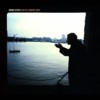 Recorded over different nights of the Final Academy exhibition, this album features Gysin reading early cut-ups from the time of his early collaborations with William S. Burroughs. Musicians several decades younger than he add a spontaneous excitement to his animated recital, lending this document a vitality that far exceeds its historic value.
Recorded over different nights of the Final Academy exhibition, this album features Gysin reading early cut-ups from the time of his early collaborations with William S. Burroughs. Musicians several decades younger than he add a spontaneous excitement to his animated recital, lending this document a vitality that far exceeds its historic value.
Joining him are Tessa from The Slits, Steve Noble of Rip, Rig, and Panic, as well as Gile/Jail of Penguin Café Orchestra, and Ramuntcho Matta, who also provided the music for Gysin's poetry on One Night @ the 1001. The music here was created during the event's sound checks and works much better than I had anticipated. The style of music ranges from sparse abstraction to tribal rhythms to frenetic rock. Although Gysin was generations removed from these musicians, little awkwardness exists between he and the group. Instead Gysin jumps right in and infuses his words with emphatic rhythms to fully integrate them with the music. His health wasn't so good during these readings, but the only obvious effect it had is on "Cut-Ups 1960 (Bardo Hotel)," when he complains that all the "fire and brimstone" in the air has given him an attack of asthma and subsequently forces him to shorten a few words.
He reads mainly from Minutes to Go, Terry Wilson's book of interviews with Gysin, Here to Go, and what was to become his final book, The Last Museum. His choice of readings serves as an excellent introduction for those unfamiliar with his work, and the addition of talented musicians adds a significant element for those who already do know it. "Minutes to Go #1" and "Cut-Ups (1959)" explain the ins and outs of the cut-up method he created and subsequently shared with Burroughs, how words from any source can be excised from their context and reshuffled in permutations to reveal hidden truth. Although it is true that Tristan Tzara had already done something similar by pulling random words out of a hat, Gysin's method had compelling mystical intentions rather than Tzara's Dada nonsense. The only questionable inclusion here is "Ad Lib" because the recording quality is at odds with the rest of the disc. Sounding as if it were recorded in a bucket, Gysin is nearly inaudible and the band's live mix is poor.
Yet just about everything else on this recording is fantastic. Gysin is an enthusiastic entertainer, and his energetic performances here, combined with a strong supporting cast, go a long way toward illustrating why he has been such an influential figure throughout the years.
samples:
Read More
- Administrator
- Albums and Singles
 Waldteufel returns to conjure primeval forces deep within forests shrouded in darkness. Using hypnotic tribal percussion, cosmic drones, and unearthly chants, they have created an album of dense Germanic pagan hymns that is both transcendent and mystifying.
Waldteufel returns to conjure primeval forces deep within forests shrouded in darkness. Using hypnotic tribal percussion, cosmic drones, and unearthly chants, they have created an album of dense Germanic pagan hymns that is both transcendent and mystifying.
The vocals on this album are all in German and are usually read or chanted. The lyrics come from texts by two mystic poets from fin de siecle Munich, Alfred Schuler and Stefan George, as well as from the ancient Indian Vedas, sometimes even within the same song. While Schuler's work mostly concerns the divine light of the universe, that of George is frequently preoccupied with power struggles and the ego. Supported by the Vedas, the collision of these two different obsessions erupts in powerful and frequently harrowing music.
Primal forces are unleashed with the invocation "Telesma," which embeds a folk accordion in subtle washes of drones and electronic pulses to combine with the recitation of Schuler's text in evocation of what is translated as "a vibrating complex of light." According to Schuler, it is the substance of the universe itself. The difference between the poets is noticeable immediately when anthemic metal guitar passages roar into life to accompany George's paradoxical and egotistical words on the album's title track. Even as the two poets frequently ran in the same circles, here the band cleverly entwines their ideas by adding to the song the chant "Sanguis," or blood, which Schuler believed was the source of creativity.
In addition to the lyrics, percussion is also a significant part of this album. Propulsive and insistent rhythms command the listener's attention at every step. Combined with the layered chanting of esoteric poetry, there is a palpable ritualistic quality to this music. A militaristic undercurrent also creeps into some of the songs. Occasionally, a march might add a counter rhythm, but the most obvious example is the bugle calls and martial barking of "Kupferwut" or "Copper Rage." The lyrics come from Schuler and deal with the idea of bringing forth joy through sacrifice and rebirth.
This theme of contrasting yet interwoven opposites, of the darkness enclosing the light, is the pulsing heart of the album. On Sanguis, Waldteufel reduces life to its most primordial element, and the result is a uniquely spellbinding and otherworldly experience.
samples:
Read More
- Administrator
- Albums and Singles
 The third album from Michael Moya's wonderful group picks up where the last one left off. The nine hymnal songs here are sung from the soul, each one heavy with emotional weight. Moya and company manage to merge melancholy with hope and joy. The end result is an evocative and captivating journey.
The third album from Michael Moya's wonderful group picks up where the last one left off. The nine hymnal songs here are sung from the soul, each one heavy with emotional weight. Moya and company manage to merge melancholy with hope and joy. The end result is an evocative and captivating journey.
Moya's ghostly mastery of the guitar here is as beautiful as ever. The tremulous notes howl in a melancholy dirge, his playing cutting through the music like a razor. The warbling, singing-saw guitar that has made previous Hrsta and the early Godspeed releases so evocative is still present. On "Entre la Mer et l'Eau Douce" it almost brings a tear to my eyes, Moya's guitar is hauntingly beautiful. However, his guitar does not play a hugely prominent role on Ghosts Will Come and Kiss Our Eyes. Much time and space is instead given to Hammond organ and harmonium. These instruments backed with soft and sympathetic percussion give rise to a lush sound to the album. "Hechicero del Bosque" exemplifies this rich sound, the band filling up the song but not allowing it to become cluttered.
The album finishes on an unlikely cover: The Bee Gees' "Holiday." What could have very easily been a mawkish interpretation of a housewife's fave is instead quite a beautiful, if slightly sinister, rendition. Moya's voice is comfortable within the confines of the music and the song sounds like it belongs to Hrsta more than the Bee Gees. Indeed, "The Orchard," from earlier in the album has a very similar vibe to "Holiday," both sounding like they were cut from the same cloth.
I would be hard pressed to pick a favourite out of the three Hrsta releases but Ghosts Will Come and Kiss Our Eyes definitely stands proud with the other two. It continues the trend of gorgeous sleeves; the bold but delicate colors of the flower on the cover reflect the organic, lovely music on the CD. Hrsta may be often lumped in under the "just another Godspeed spin off" umbrella but that does an injustice to their music. This album shows that although some musical elements are shared, Hrsta are a very different animal deserving their own respect and identity.
samples:
Read More
- Administrator
- Albums and Singles
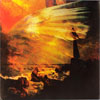 A couple of years ago, when Justin Broadrick decided to sing instead of shout and focus more on atmospheres instead of riffing, Godflesh became Jesu and an entirely new genre ("shoegaze metal" perhaps) was born. The Angelic Process have been quick to put their mark on the genre, and this disc is a good effort that is unfortunately hindered by spotty production.
A couple of years ago, when Justin Broadrick decided to sing instead of shout and focus more on atmospheres instead of riffing, Godflesh became Jesu and an entirely new genre ("shoegaze metal" perhaps) was born. The Angelic Process have been quick to put their mark on the genre, and this disc is a good effort that is unfortunately hindered by spotty production.
The duo of K. Angylus (guitar, vocals, drums and electronics) and M. Dragynfly (bass, vocals and electronics) follow along in the Jesu style of thick, slow atmospheres (probably just as inspired by The Cure's Faith as Broadrick himself) though their approach emphasizes the electronics and synths more than just the guitars. The vocals are consistent with the rest of the style: mostly singing and occasionally shouted but always so deep in the mix to be nearly unintelligible. From what can be discerned, the vocals by Dragynfly occasionally resemble a slightly more histrionic Susan Steinger, which is not a bad thing.
Opening track "The Promise of Snakes," clocking in at nearly 10 minutes, is one of the highlights of the album: opening with dark atmospheric synth and a metronomic drum machine rhythm, the track soon blasts open with thick vocals and guitar riffing before picking up the tempo to a nearly metal pace. Though long, the track shifts in tempos and dynamics enough to never become stagnant. "The Resonance of Goodbye" begins similarly, but the distortion is at such a level that it almost resembles a noise band more than anyone playing guitar. That is, until the vaguely prog-rock guitar solo makes an appearance.
"We All Die Laughing" is one of the few tracks that focuses a bit less on the ambience and a little more on the riffs: heavily monolith ones that, if it were not for the muddy distortion wouldn't be out of place on an early Swans record. "Dying in A-Minor" is instead more focused on the electronic elements of The Angelic Process' sound, but digital clipping unfortunately hampers the more gentle passages.
Which brings me to my biggest gripe about this album: the production. There are a lot of interesting moments on the disc but most of them are hampered by a mix that is based on heavy, mid-range distortion that unfortunately blurs everything else. Nothing is distinct and this distortion is pretty much identical from track to track, leaving, superficially at least, very little variation. Close listening shows that there is a lot of diversity from one song to another, but on the surface it all sounds the same. Plus, there is too much reverb. (This is coming from someone who subscribes to the Lee Perry/Martin Hannett "mo' reverb is mo' better" school of thought.) Perhaps it was an attempt to sound "kvlt" like so many black metal bands, but in actuality it makes what could have been a great album just a good one.
samples:
Read More
- Administrator
- Albums and Singles
 Fresh after a couple of collaborations with noise god Merzbow, this disc shows Henrik Nordvargr Bjorkk (no relation) balancing the words of electronic drone and harsh noise across two long tracks.
Fresh after a couple of collaborations with noise god Merzbow, this disc shows Henrik Nordvargr Bjorkk (no relation) balancing the words of electronic drone and harsh noise across two long tracks.
Bjorkk, also the mastermind of "black industrial" band Mz.412, is no stranger to working in the darker reaches of the electronic realm. In Oceans Abandoned By Life I Drown... To Live Again As A Servant Of Darkness, therefore, doesn't reflect any stylistic shifts or drastic departures in his approach, but it does opt not to use the stereotypical "evil" imagery associated with some of his other projects. Instead, the disc sits in a lovely Stephen O'Malley designed, Seldon Hunt photographed fold out sleeve that compliments the sound very nicely.
"In Oceans Abandoned By Life I Drown…" begins with almost pure silence before horrid, processed screams cut in, with a queasy, bassy gurgle, shrill sine waves, and almost psychedelic, distorted synth lines. This harsh noise backing stays in place for awhile, never relenting, but also never becoming stagnant, before it all drops off for a passage of stark, black ambience. Of course things won't stay peaceful, and the noise pummeling begins anew, this time resembling previous collaborator Masami Akita's personal blend of junk fuzz screech, but even through the cacophony there is a sense of control and direction, as if Bjorkk is conducting a noise orchestra.
Diametrically opposite of the previous track's opening, "…To Live Again As A Servant of Darkness" opens with the sweet sound of processed feedback and a subtle hint of percussion off in the distance, like some distant spacecraft looming ominously. As before, the noise eventually gives way to a bleak, desolate passage of minimal electronics and mood before coming back with scraping metal, crunchy electronic distortion, and a subtle rhythmic pulse, a combination that will sound intimately familiar to fans of the golden age of Japanese noise. However, the track slows down and mixes in a very bizarre bass synth line before ending on some distant rhythm loops.
In Oceans Abandoned… does not do anything innovative or surprising, but its quality and diversity in sound more than make up for it. As a whole the disc has an almost familiar feel, like one of those discs that has been played many, many times before that just never gets old or boring.
samples:
- In Oceans Abandoned By Life I Drown
- To Live Again As A Servant of Darkness (Excerpt 1)
- To Live Again As A Servant of Darkness (Excerpt 2)
Read More
- Matthew Amundsen
- Albums and Singles
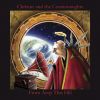
Read More
- Matthew Amundsen
- Albums and Singles
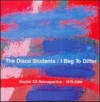
Read More
- Matthew Amundsen
- Albums and Singles
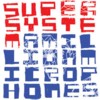
Read More
- Administrator
- Albums and Singles
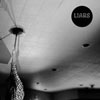 Four albums into their career, Liars take yet another artistic sharp turn; a set of relatively conventional rock songs. For listeners used to the contrary experimentalism of their last two records, Liars will be as polarizing as anything the group has done.
Four albums into their career, Liars take yet another artistic sharp turn; a set of relatively conventional rock songs. For listeners used to the contrary experimentalism of their last two records, Liars will be as polarizing as anything the group has done.
Putting aside my misgivings about their regained accessibility, I have to admit that Liars is most immediately enjoyable record the band has put out. Regardless of mercurial nature, I never expected to have one of their melodies stuck in my head. The synth fanfares and falsetto cooing on "Houseclouds" are typical here in the way they worm their way into your skull. Liars have always had a penchant for shouted choruses, and the clean defined vocal production lends itself to shouting along with them too. When vocalist Angus Andrew yells "Come Save Me!" on "Clear Island," he sounds more at home on an arena stage than some Walpurgisnacht bonfire.
In gaining pop accessibly Liars have largely abandoned the menace and secrecy that shrouded their records. The single "Sailing to Byzantium" is positively sedate: breezy syths and chiming electric piano ride over a loping bass and snare groove. The only darkness that colors this track is the kind found inside of a chic cocktail joint. The closer, "Protection," is a wistful ballad on childhood: a tremoloed organ fills the song with an ecclesiastic glow that underpins the sentimental subject matter
There are still some cloak and dagger moments on the album, especially on "Leather Prowler" and "The Dumb in the Rain." The murky guitar strum and monotone singing create a claustrophobia that adds gravity to the more buoyant sections of the album. These songs though, are still only isolated spots to a more polished whole.
Whenever a band changes their sound radically it will enviably anger the purists and any band that sells even marginally well will inevitably have to suffer from accusations of insincerity. Liars are certainly familiar with this kind of scrutiny. I still chuckle at the hostility that They Were Wrong, So We Drowned was greeted with when it was released in 2002. Five years gone, the pendulum has swung the other direction, with accusations of selling out already being foisted about. The argument would be convincing if this record had followed the wave of hype that greeted them at beginning of the decade. They didn't care then about the opinion of trend spotting journalists and fair-weather fans, why should they care now? If Liars excel in anything it is breaking preconceptions of what they as a band should sound like. Whatever the opinion on the actual music might be, they have at least done that.
samples:
Read More
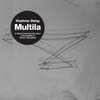 In the Sasu Ripatti oeuvre, this savagely deep album stands as a hallmark of the producer's virtuosity. Enraptured by his latest album under this moniker, Whistleblower, I take special delight in returning to his long out-of-print Chain Reaction classic and reconnecting with the artist during his rise to infamy.
In the Sasu Ripatti oeuvre, this savagely deep album stands as a hallmark of the producer's virtuosity. Enraptured by his latest album under this moniker, Whistleblower, I take special delight in returning to his long out-of-print Chain Reaction classic and reconnecting with the artist during his rise to infamy.
- Administrator
- Albums and Singles
 In the Sasu Ripatti oeuvre, this savagely deep album stands as a hallmark of the producer's virtuosity. Enraptured by his latest album under this moniker, Whistleblower, I take special delight in returning to his long out-of-print Chain Reaction classic and reconnecting with the artist during his rise to infamy.
In the Sasu Ripatti oeuvre, this savagely deep album stands as a hallmark of the producer's virtuosity. Enraptured by his latest album under this moniker, Whistleblower, I take special delight in returning to his long out-of-print Chain Reaction classic and reconnecting with the artist during his rise to infamy.
Back in the day when so-called "glitch" music was touching the lives of so many music geeks and techno snobs, Ripatti found himself a producer in demand. At least, that's what his discography implies. Though not unknown upon of the original release of Multila, the year 2000 transformed him into an underground superstar. In that year alone, Ripatti released four albums under three different pseudonyms, acquiring new converts from various and sometimes overlapping factions of the electronic music scene. He revolutionized soul with the deep, blissed-out microhouse of Luomo's Vocalcity and added nuance to rhythm on Uusitalo's technoid headtrip Vapaa Muurari Live. Furthermore, Ripatti offered two albums as Vladislav Delay, one being this absolutely incredible album, which he has just reissued officially on his own Huume vanity label.
Choosing to stick with the original mastering job by Moritz Von Oswald, whose aforementioned Chain Reaction imprint first released this gem, Ripatti has given us a second chance to own and enjoy Multila as it was originally intended, inadvertently opposing the musicological revisionism we've all grown so accustomed to. From the rippling subspace ambience that initiates album opener "Ranta," it's hard for me not to recall when these sounds were still so unusual and ultramodern. Though certainly neither the first nor the only artist piecing together riddles of these abstract spaces between dub and techno, Ripatti explored and achieved a fantastic balance between process-driven sound design and inspirational accessibility in his initial work. No track better embodies that sonic dichotomy than the breathtaking "Huone," an aural epic of Homeric proportions. Not exactly a dance track by authoritarian standards, this 22 minute odyssey suppresses its untiring 4/4 beat foundation by varying degrees throughout, creating an unhinged type of post-traumatic techno.
Instead of depending on the overt crackling static and digital hiccups that made clicks and cuts contemporaries like Pole and Oval so popular, Ripatti dug deeper and discovered sounds whose origins are unknown and recondite. "Viite" sizzles and churns amidst its phantasmagorical climate, while the subsequent "Karha" plays like a gloriously recovered hymn drowned in tape damage—the latter in particular stands now in harsh contrast against the bright, clearer style that defines Whistleblower. The delicate coda "Nesso" signifies a luminous end to this venture, its radiant trebly textures slicing through the bass heavy atmosphere. Needless to say at this point, Multila is a fundamental document of modern electronic music that was well worth reissuing. Let's hope that this marks the beginning of a more comprehensive reissue program of Ripatti's catalog.
samples:
Read More

